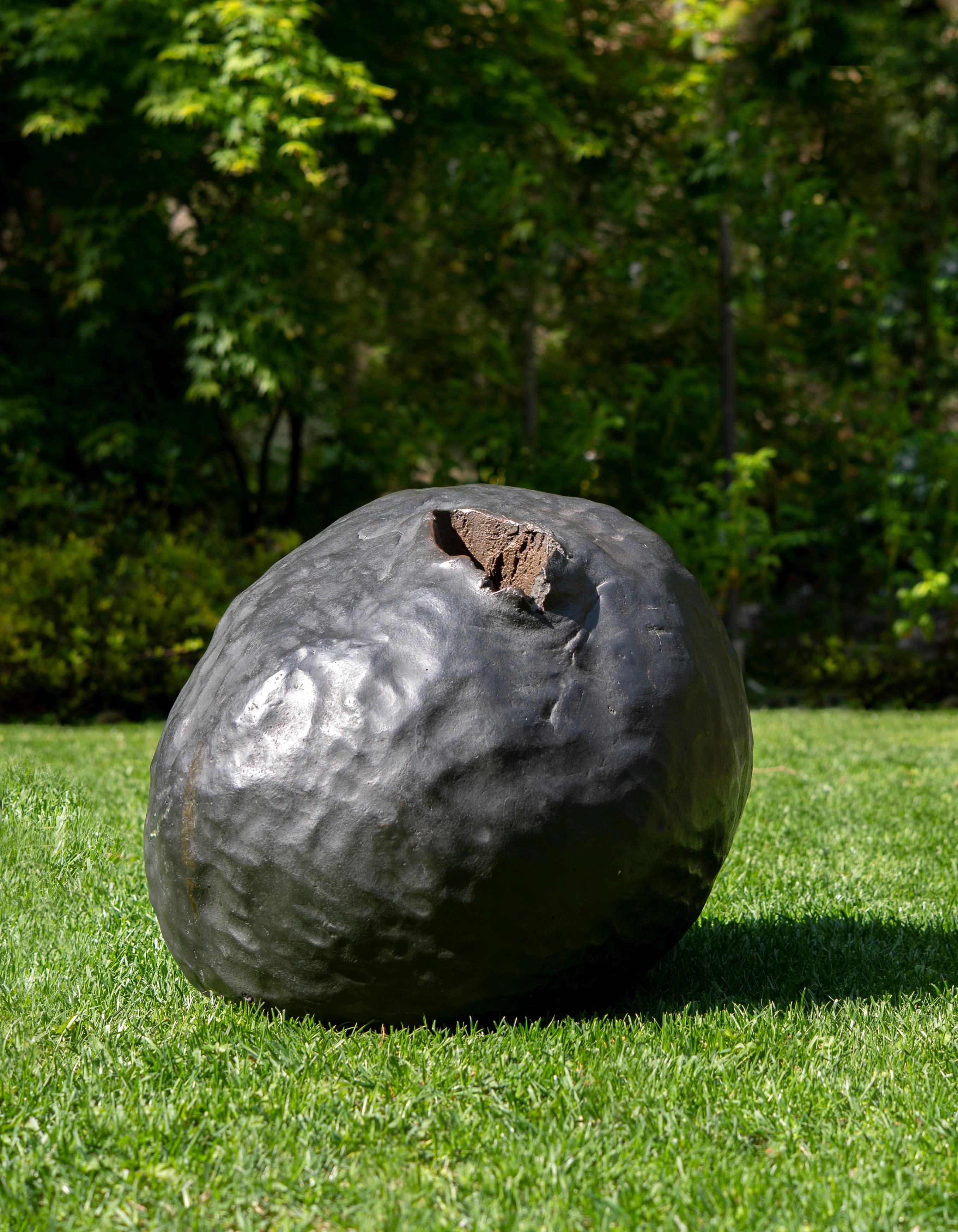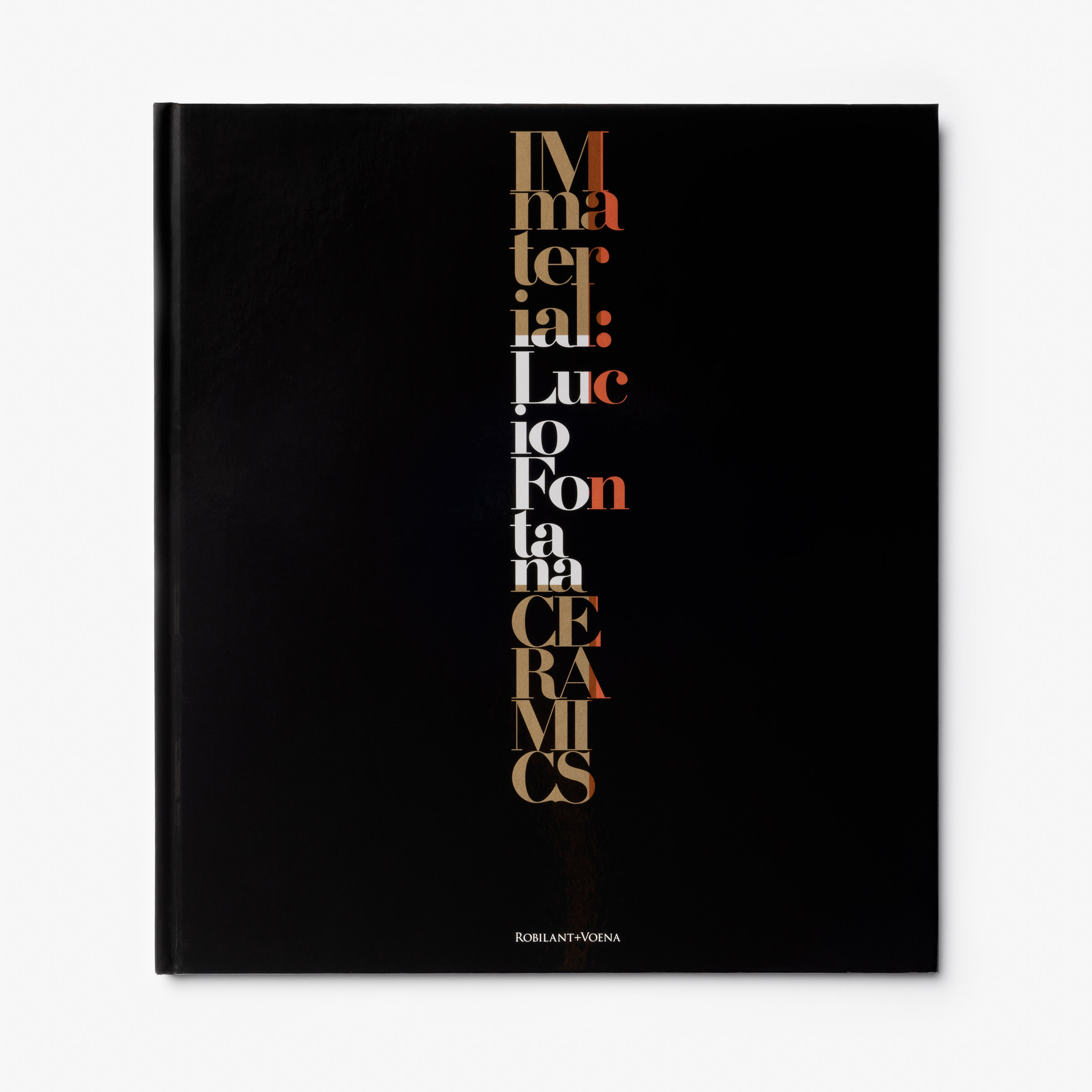Lucio Fontana
b. 1899, Rosario de Santa Fé, Argentina
d. 1968, Comabbio, Italy
Concetto Spaziale, Natura (Spatial Concept, Nature)
1959–60
Bronze
39 x 50 x 45 cm (15 3/8 x 19 3/4 x 17 3/4 in.)
Edition of 3 + 1 AP (AP 1/1)
Provenance
Private collection, Turin,
Private collection, Verona,
Skulpturenmuseum Glaskaten, Marl,
Private collection, London,
Private collection, Milan.
Literature
E. Crispolti, Lucio Fontana. Catalogue raisonné des peintures, sculptures et environnements spatiaux, II, Brussels, 1974, pp. 104-105, 59-60 N 12.
E. Crispolti, Fontana. Catalogo generale, I, Milan, 1986, p. 353, 59-60 N 12.
E. Crispolti, Lucio Fontana, Catalogo Ragionato di Sculture, Dipinti, Ambientazioni, Milan, 2006, I, p. 532, 59-60 N 12.
L. M. Barbero (ed.), Lucio Fontana: Catalogo ragionato delle sculture ceramiche, II, Milan, 2022, p. 614, no. 59-60 N 12 (ceramic version illustrated).Description
xBetween 1959 and 1960 Lucio Fontana returned to sculpture, and during summers spent in Albisola he created a cycle of works in terracotta entitled Nature (or Natures in English). It is perhaps no coincidence that the production of these works occurred simultaneously with his first tagli (cuts) in canvas: the two cycles represent a culmination of Fontana’s lifelong aim to create a truly spatialist art that transcended traditional categories of painting and sculpture. Fontana first presented the Nature in the summer of 1960 in Venice in an exhibition entitled Dalla Natura all'Arte and in November of the following year with Iris Clert in Paris. Later, Fontana decided to translate a number of works in the cycle into bronze. Some castings took place while the artist was still alive, and after his death the project was completed under the supervision of his wife Teresita Rasini.
The earliest specimens from the series were pebbles (59 N 1-43), single-sided flakes or bivalve shapes, followed by a group of "balls" as Fontana familiarly called them (59-60 N 1-40) that evoke the celestial bodies, especially stars, that so fascinated the artist. It was Fontana himself, in a dialogue with Carla Lonzi (Self-Portrait, Bari, 1969, p. 389), who pointed to the cosmic realms as the inspiration for the Nature cycle: “I was thinking of those worlds, of the moon with these... holes, this terrible silence that causes anguish, and the astronauts in a new world. And so... in the artist's fantasy... these immense things have been there for billions of years... man arrives, in mortal silence, in this anguish, and leaves a vital sign of his arrival... they were these still forms with a sign of wanting to make inert matter live, weren't they?"
At the same time, the sign or deep hole that penetrates the terracotta or bronze is the way in which Fontana takes possession of the material and makes it dynamic through a relationship that is sensual and sometimes explicitly erotic. All these resonances were already grasped in 1971 by one of the first writings that Fontana's most careful scholar, Enrico Crispolti, dedicated to the artist (E. Crispolti, Omaggio a Fontana, Assisi and Rome, 1971, p. 183): 'The "hole" that becomes a vortex, that sinks abysmally, is like a material spring that marks an entrance to life...or the "furrow" that often cuts through these rounded "balloons" (hypothetical artificial satellites but which have, still, a lunar face) is an ancient gesture of taking possession, of a trace of will and recall as in a certain way is the sign—religious, exorcistic—that peasants often draw on massive loaves of bread, structurally manipulated just as Fontana manipulates these nature.'






